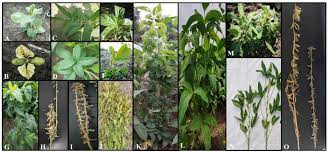"Ion Beam" Use Of Mutation In Agriculture
Ion beams, specifically heavy ion beams, are highly energetic and can penetrate plant cells more deeply than other radiation sources, such as X-rays or gamma rays. This increased penetration can result in a higher frequency of mutations, including the creation of new genes or modifications to existing genes.
Ion beam irradiation can be used to induce mutations in various crops, including rice, wheat, soybeans, and vegetables. By irradiating plant seeds with ion beams, scientists can create a large population of mutant plants, screen them for desirable traits, and select those with the most promising characteristics for further breeding and development.
Mutation breeding using ion beams is considered a safe and effective method of creating new plant varieties because it is a natural process that mimics the way plants evolve in nature. Moreover, the technique is highly specific and precise, as only a small portion of the plant's DNA is altered, unlike genetic engineering, which can introduce foreign genes into the plant's genome.
In summary, ion beam use in mutation breeding in agriculture is a promising technique that can help create new plant varieties with improved characteristics that can benefit farmers and consumers alike.






Comments
Post a Comment